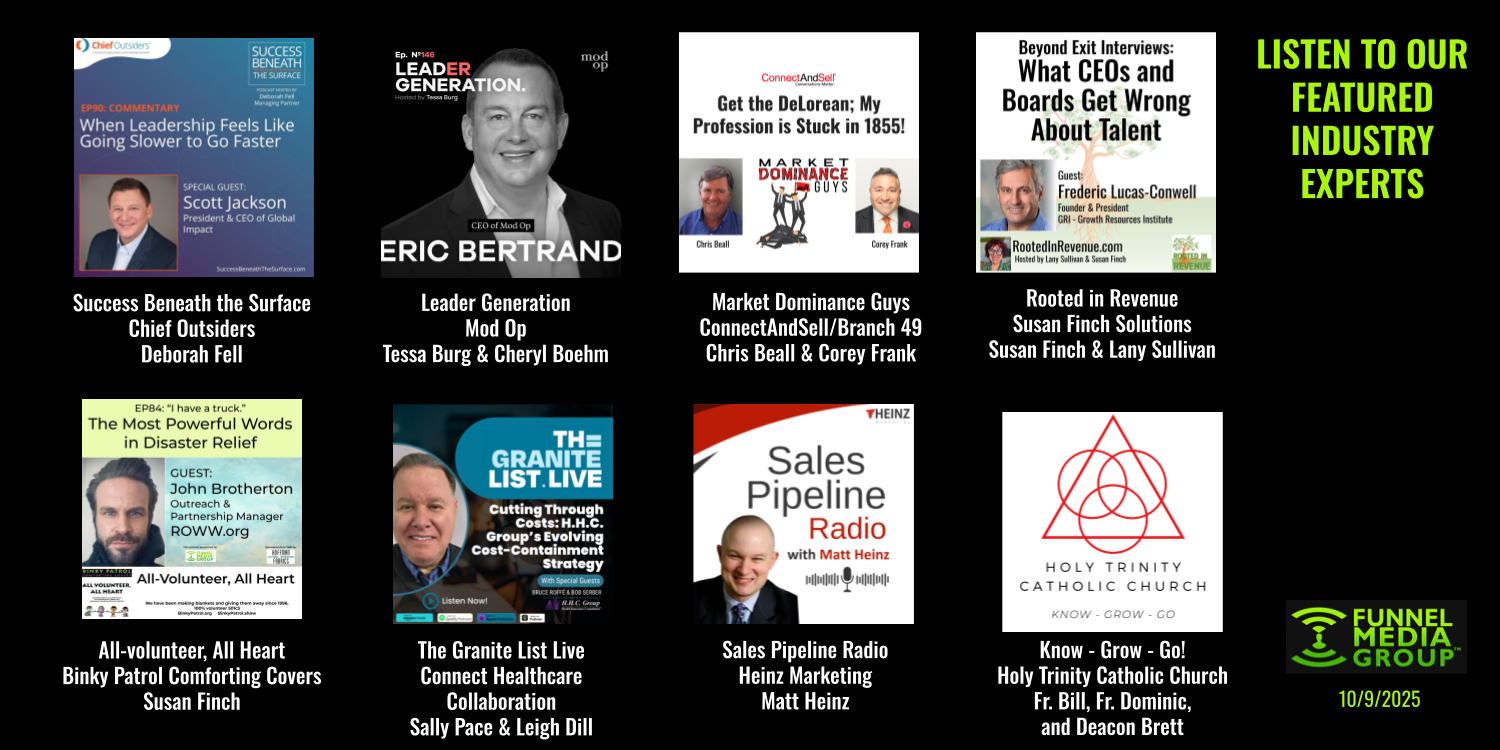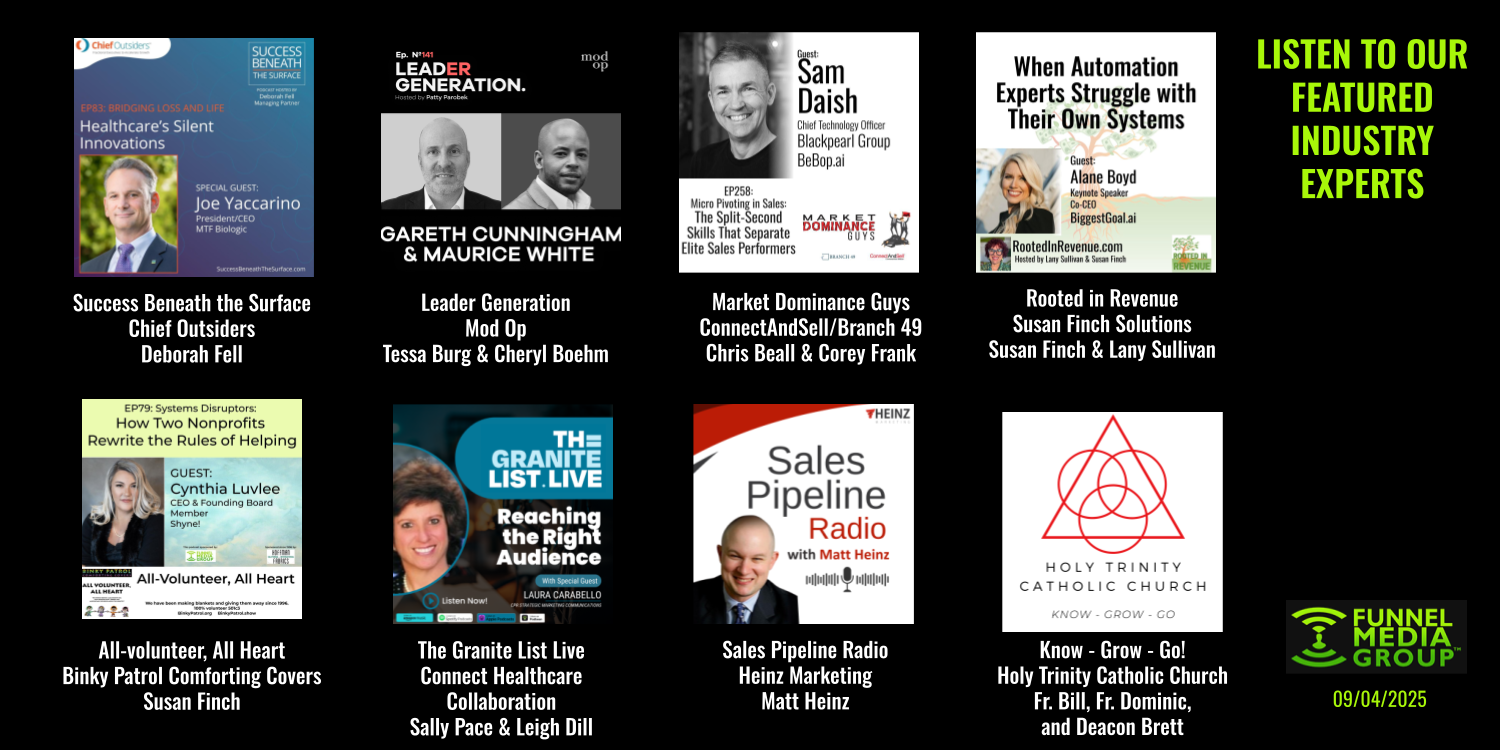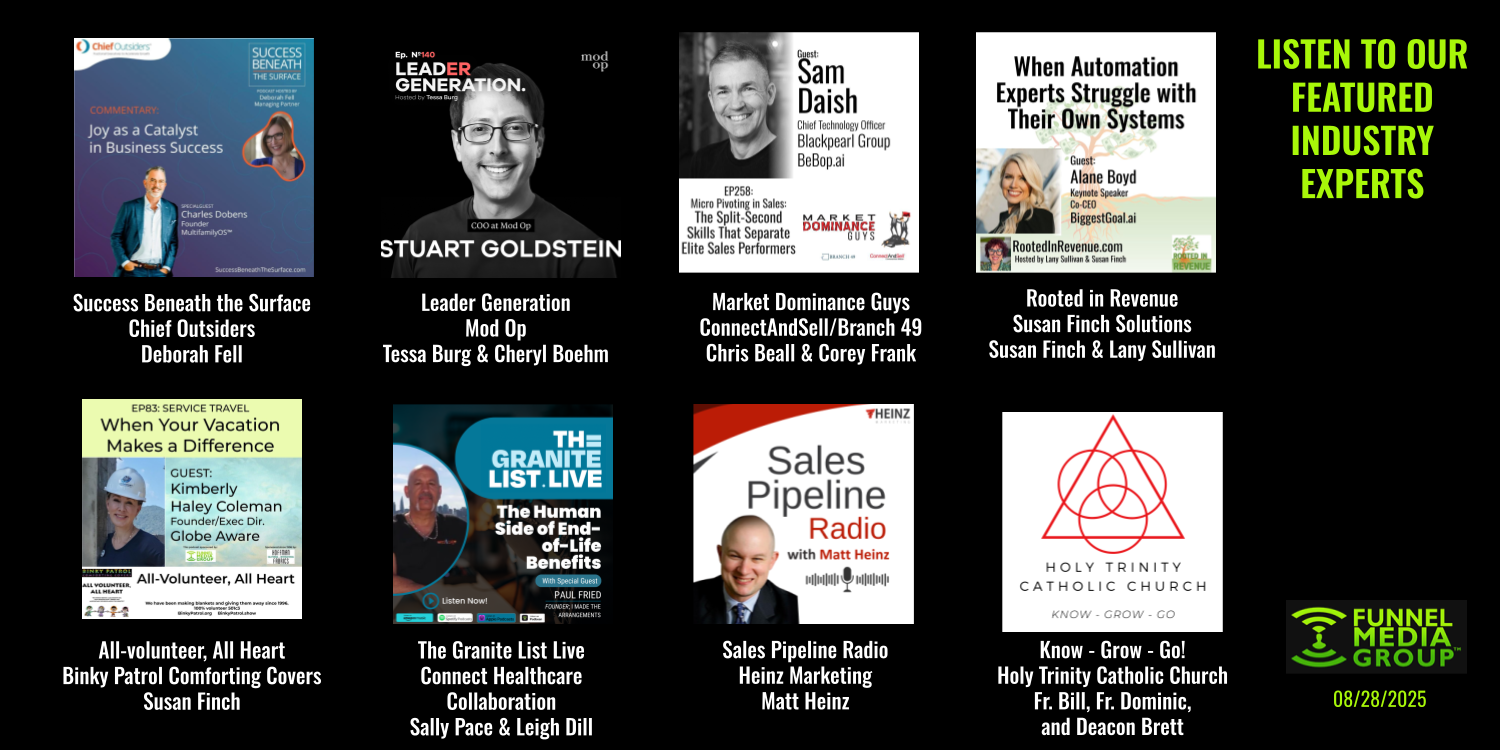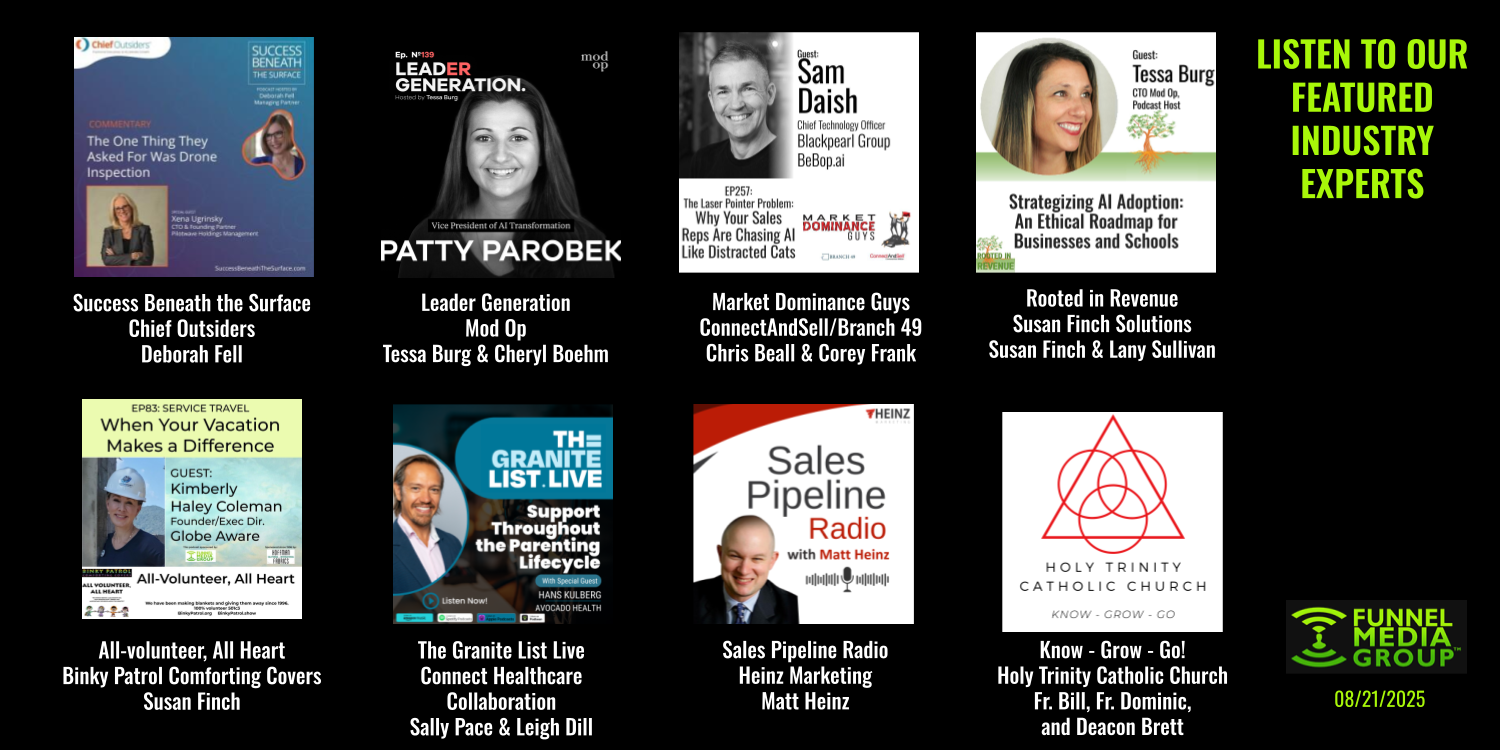Podcast Frequency is a Balance Between Too Few and Just Right
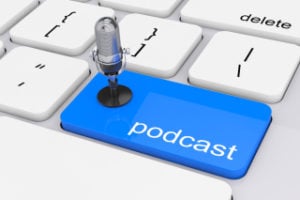 For this article, I offer opinions on helping you decide the frequency of your podcast. We will talk about the various pros and cons, time commitments, and the balance between the need to reach an audience and produce useable content.
For this article, I offer opinions on helping you decide the frequency of your podcast. We will talk about the various pros and cons, time commitments, and the balance between the need to reach an audience and produce useable content.
It’s said that the best podcast schedule is one the host can stick to on a regular basis.
Research reports indicate that a lot of podcasts are started, but few pass the seven-episode mark before they run out of steam, and that has a lot to do with the host and his or her availability. There are two ways around this issue – – have fewer programs or multiple hosts. Many programs on the Funnel Radio Channel have a single host, many also have multiple hosts, and one has seven rotating hosts (a weekly program).
Of course, some programs run out of content and ideas, but what usually happens is the host gets scattered, delays an episode here and there, and before they know it a year has gone by with only seven shows that occurred ten months ago. They should have saved their time and money.
It’s said that the best podcast schedule is one the host can stick to on a regular basis.
A second consideration for the best podcast schedule is one that the host’s marketing department is enthusiastic about producing and promoting. Many hosts start a program with little support from the marketing department. Many marketers seem to think podcasts are ego trips, and they fail to support the person signing their paychecks. The reason this occurs most often is that it wasn’t marketing’s idea, and therefore, they are lukewarm about getting involved in something most of them know little about. Podcasts take time and knowledge, but surprisingly very little money. And after producing a few programs, the lack-of-knowledge barrier is quickly overcome. After all, what marketer wouldn’t want “Podcast Producer” added to his or her resume?
Interestingly, a potential host always asks two questions:
- “How big an audience can I have?”
- “How often do I have to do this thing?”
My responses are: “If you have a large marketplace, you will potentially have a large audience and the more frequent the program, the more the audience grows. As for frequency, it depends on you and the number of hosts available for the program.”
If, however, the host services a small marketplace, his or her goal should be to establish the company and host as thought leaders, regardless of the market size. This means their audience may not be in the thousands, but if it is the right audience, their goal will be met.
Podcast frequency can be:
- Daily: Usually someone making a living off the commercials on the podcast.
- Weekly: These programs serve larger audiences, and are usually prospecting in nature.
- Bi-weekly: A large audience with a host who has limited time, unless there are several hosts for the program.
- Monthly: This is usually for the smaller marketplace. Beware: Less than bi-weekly and your listeners may lose you and not remember when your program is available.
Can You Consume the Content?
Program frequency is often also driven by a company’s ability to consume the content a podcast produces. There are sixteen uses for podcast content, and larger companies tend to have more frequent podcasts because they can use the content. Content use may be accessed by many marketers and agencies your company uses.
We have several programs on the Funnel Radio Channel that started as monthly, soon moved to bi-weekly, and then eventually to weekly. Once the host and staff realized that producing the program was not as time-consuming as first thought, it was easy to do weekly programs.
The Funnel Radio Channel is unusual because its programs are broadcast live on a streaming channel each week at specific times. As an alternative to showing up for a live broadcast, it is worth noting that many weekly hosts record their program in advance so it can be played at the same time each week, or bi-weekly.
The benefit of a frequent program with a specific time-and-day release schedule is that listeners can count on hearing the program at a time and date or day of the week. Whether the program is live on internet radio and then released as a podcast, or released at a specific time each week as just a podcast, passionate followers look forward to new programs.
All of us are creatures of habit, and once we hear a program we like, we are apt to want to listen to it frequently on a timetable chosen from your publishing schedule.
In a few weeks, we will discuss “What Kind of Podcast Should We Produce?”


